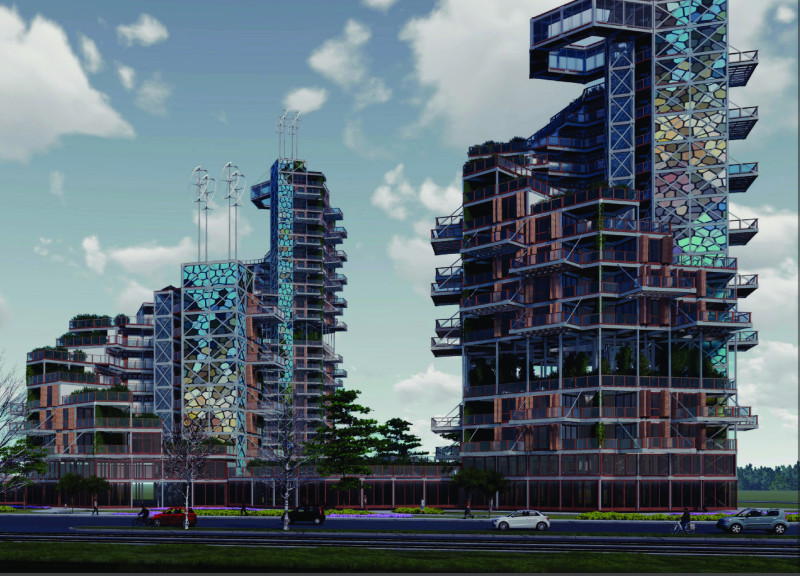5 key facts about this project
The Melbourne Affordable Housing project tackles the significant issues of urban sprawl, housing affordability, and social instability faced by one of Australia’s major cities. Located in Melbourne, the design promotes a sustainable living environment through densification. It aims to create mixed-use areas that respond to the varied needs of the community. The overall concept focuses on flexibility and adaptability, blending residential and commercial spaces in a cohesive manner.
Modular Design
The project utilizes a modular approach that enhances construction efficiency and allows for various housing configurations. The design features taller buildings in the city center and gradually shifts to lower profiles in the outer suburbs. This strategy respects the existing urban landscape while making the best use of land. Residences can be configured as single, double, or triple units, catering to different household sizes and encouraging a diverse community.
Community-Centric Spaces
Communal spaces are central to the design, promoting interaction among residents and fostering a sense of belonging. The ground floor is dedicated to commercial uses and shared public facilities, including bike parking and gardens. By integrating co-working spaces and workshops, the design emphasizes both personal and professional development opportunities for the people living there.
Sustainability Practices
Sustainability is a vital element of the project. The building features high-performance windows and insulation that contribute to an airtight facade, enhancing energy efficiency. Water management includes strategies such as rainwater collection and greywater recycling, minimizing resource use. Renewable energy sources, like wind turbines and solar panels on the rooftops, further demonstrate the commitment to reducing the environmental impact.
In addition to its sustainable features, the design includes balconies and large windows that allow for ample natural light and ventilation. These elements not only improve indoor comfort but also provide residents with views of the surrounding urban area, contributing positively to their living experience.



















































